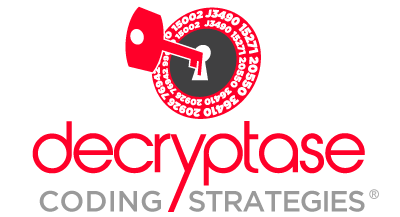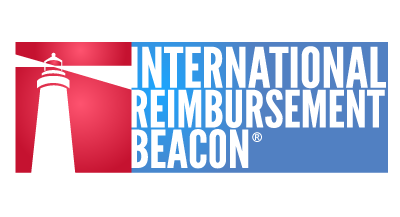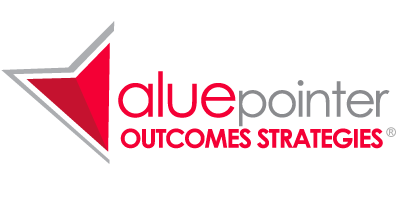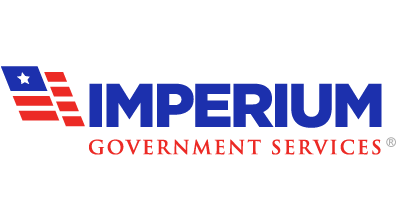Success Cases
Hotline Success Cases
GIRS Integrated Hotline Solutions Resolves Medical Device Pricing Issue
A provider contacted the GIRS InContact Reimbursement Hotline® when he received a lower than expected reimbursement from a private payer on a client’s biologic. The caller asked for assistance on coverage and payment. The payment was inadequate for the specified billing codes.
The counselor forwarded the provider’s inquiry to the Payer Advocacy Compass®(PAC) team and a conference with the provider was arranged to initiate a plan of action. The goal was for the PAC team to request the payer to review and adjust the fee schedule for the biologic.
GIRS was able to find the Medicare fee schedule information for the same codes. The PAC team sent a letter with other relevant pricing information for the medical technology to the payer medical director and followed up with their pricing staff educating them about the pricing of the code.
The Medicare fee schedule and a letter of medical necessity (LMN) were also sent to the provider to forward to the private payer for his appeal.
The provider was grateful for the time and effort expended by the hotline on his behalf on the matter. The payer agreed to review and update their fee schedule. This is an example of how GIRS InContact Reimbursement Hotline and PAC teamwork together providing integrated reimbursement solutions to support our clients.
Please contact us by email or call us at 1-844-514-4477. Also, follow our Linkedin Company Page for more bi-weekly news on reimbursement trends, milestones, and achievements.
Prevention of Inappropriate Billing Leads to the Assignment of a Specific Code for a Biologic
Competitors and coding experts were recommending incorrect codes for our client’s biologic and similar products that were being billed with an unlisted J code. Additionally, providers who participated in Coding Blogs and writers for Coding Newsletters for this industry were resistant to our client’s Billing Guide and The Global Integrated Reimbursement Services (GIRS) InContact Reimbursement Line® guidance to accounts on the appropriate codes.
This situation was critical to address, as the use of incorrect codes could have led to an increased risk of audits for the providers. The President of GIRS met with the American Medical Association (AMA) staff and requested authoritative coding guidance be published on the codes to educate providers. GIRS also met with the Coding Newsletter Editor and educated them on the appropriate codes for billing.
Accounts were consistently educated on the appropriate codes and the AMA guidance was provided to accounts through the InContact Reimbursement Line. To clarify the coding, the AMA staff themselves drafted a coding application for a specific Current Procedural Terminology (CPT®) code for the technology.
The GIRS President developed specialty society support and then presented to the CPT® Editorial Panel on the coding change. A specific code was assigned and this has significantly reduced provider confusion. This is an example of how GIRS integrates medical technology hotline work with reimbursement consulting services to achieve better outcomes for our clients. The issues reported on the hotline are considered by our client and us, which leads to reimbursement strategies being developed proactively to address the issues.
If you need the support of our InContact Reimbursement Line® to assist your accounts to submit clean claims and overcome denials, please contact us by email or call us toll-free at 1-844-514-4477 .
Achieving far reaching changes…
The GIRS InContact Reimbursement Line® for a biologic received account pushback on the codes verified by the AMA because of coding advice that was being published in industry journals that conflicted with the AMA verified codes.
The President of GIRS personally worked with the AMA to verify the coding again and the GIRS InContact Reimbursement Line® educated the accounts about product coding.
The work with the AMA resulted in the assignment of a specific code to the technology, thereby reducing confusion. This is a perfect example of how the GIRS InContact Reimbursement Line® can not only recognize serious issues that are reported on the hotlines, but also develop coding strategies/solutions to resolve these issues with key stakeholders and decision makers.
Clean claims and expansion of use
The GIRS InContact Reimbursement Line® met with a physician who indicated that he was using an injection during surgeries but was not aware it could be used in an office outpatient setting. The physician asked how he could obtain the materials/supplies to conduct in-office injections and also informed the counselor that he was considering billing a code for the biologic. The physician also informed the counselor that he had a patient he would love to use the injection on within the next few weeks.
The reimbursement counselor educated the provider of the correct code to bill for the injection based on the Billing Guide. The counselor also informed the provider that the HCPCS code they were considering was not appropriate for the biologic. The counselor also provided the physician with the product brochure, the Billing Guide, a sample Letter of Medical Necessity (LMN) and a patient authorization consent form for benefit verification purposes. In addition, the counselor also reported the case to the client to request that a sales rep visit the facility to provide them with the materials/supplies. The physician was so impressed with the information provided by the counselor that he asked if the same information could be sent to his daughter’s practice. The counselor forwarded all information to the referred practice. Due to the education provided by the GIRS Hotline, the physician obtained the information necessary to submit a clean claim and the use of the client technology expanded to the physician office setting.
Success in Appeals Assistance
The GIRS InContact Reimbursement Line® received a request for appeals assistance. The provider indicated that she did not get paid for the use of the device. The counselor offered to contact the payer to ascertain what can be done to appeal the denial. The provider gladly accepted the counselor’s offer. The counselor contacted the payer and gathered all the necessary information for the appeal. After contacting the payer, the counselor found that the provider could not prescribe the device and needed their patient’s Primary Care Physician to prescribe the device. The GIRS InContact Reimbursement Line® was able to decipher the complex claims submission rules in order to help the account helped them to submit their appeal and get paid for the device.
View more Reimbursement Hotline Success Cases on our Blog.
Coding Application Success Cases
Case examples of successful Coding Applications:
- Developed a successful coding strategy for the sheet and injectible versions of a tissue product. With KOL support, educated CMS regarding the regulatory and reimbursement requirements for the same. This was the first tissue product ever reviewed by CMS. Information was provided to a team of CMS physicians and policy staff of the unique FDA regulatory process for tissue products and provided input to modify FDA requirement for HCPCS codes. Successfully obtained a “J” code, a C code for pass through payment in the hospital outpatient department, and a “J” code for the injectible version of the product.
- Identified appropriate CPT codes and submitted coding verifications to several diagnostic tests, therapies for malignant melanoma, acute mylogenous leukemia, and hepatitis C, and organ transplant anti-rejection drugs.
- Provided input into the revision of vascular access codes, skin substitute codes and pathology laboratory tests sections of CPT Coding Book by working with the professional societies responsible for managing the revisions.
- Obtained a unique “J” code for a recombinant monoclonal antibody.
- Obtained a collagen wound filler coding category and successfully avoided the classification of the client product in the unclassified wound filler category by providing appropriate and compelling rationale.
Payer Advocacy Compass® Success Cases
The GIRS PAC®Team Overturns Long-term Negative Coverage for a Breakthrough Biologic in a Key Payer Market
The GIRS Payer Advocacy®(PAC) Team began working with a key regional payer in June 2015 to advocate for coverage for our client’s biologic products that were not covered by this payer. GIRS sent a payer dossier including our client’s most recent clinical studies and educated them about the value proposition of our client’s biologics. GIRS then monitored the payer’s medical policies until August 2018, when the payer updated their medical policies.
The PAC team analyzed the payer’s medial policies and found that the biologics were now covered based on specific criteria. The GIRS PAC team then called the payer. The payer stated that the procedure codes were covered with a medical review necessary on a case-by-case basis and that coverage was based on medical necessity. Additionally, the payer stated that providers would need to send the patient’s medical record and notes relevant to the case for the review. Further, the payer provided the medical review team’s contact information to send the patient’s medical records.
The coverage and payment in the various settings of care were also discussed and noted. This plan had numerous plans under it that were impacted by the coverage change. As the medical policy covers our client’s biologics and as the payer verified this and provided additional coverage details that would help accounts, we counted this as positive coverage based on medical policy for our client’s biologic products.
As a result of the PAC team’s work with the payer, all plans under them implemented positive coverage. This resulted in an increase in the potential market for our client’s product by approximately 40 million covered lives.
In addition to conducting payer research, policy analysis, and developing comprehensive payer advocacy strategies to enable positive coverage for our client’s product, the PAC team developed tools that educated our client’s sales force and key stakeholders of the new, positive coverage. Further, the PAC team made strategic recommendations to educate and support providers in ensuring appropriate billing for their Medicare Advantage patients.
If your accounts are experiencing claims denials for your medical device, drugs, biologics, or diagnostics, or if you need to improve the market uptake and patient access in key markets, our PAC team can assist you to meet your company goals.
To implement successful market access strategies, the GIRS Value Discovery Landscape Assessment®team can also conduct a Reimbursement Landscape Assessment to develop payer-desired strategies with clinical outcomes experts, coding experts, policy staff, reimbursement lawyers, and a panel of current insurer medical directors. This work will provide you with foundation reimbursement strategies that will influence and coordinate your clinical outcomes, marketing, and reimbursement strategies to result in the best market access outcomes. The PAC team can then implement these strategies to obtain positive coverage, appropriate payment, and innovative payer contracting arrangements to improve market uptake. Please contact us by emailor call us at 1-844-514-4477. Also, follow our Linkedin Company Page for more bi-weekly news on reimbursement trends, milestones, and achievements.
GIRS Successfully Educates a Key East Coast Insurer on the Value Proposition of a Breakthrough Medical Device
The GIRS Payer Advocacy®(PAC) Team began working with a key regional payer in June 2018 to assist with the implementation of positive coverage for a medical device that was experiencing a high volume of claims denials for coverage and payment. The PAC team conducted extensive research that involved the review and analysis of pertinent medical policies, and discussions with the payer to educate them about the payer dossier and value proposition of the product.
As a result of the PAC team’s work with the payer, the Medicare Advantage plans implemented positive coverage. The team is continuing to work to implement positive coverage for other plan types under this payer by the next review period.
In addition to conducting payer research, policy analysis, and developing comprehensive payer advocacy strategies to enable positive coverage for our client’s product, the PAC team developed tools that educated our client’s sales force and key stakeholders of the new, positive coverage. Further, the PAC team made strategic recommendations to educate and support providers in ensuring appropriate billing for their Medicare Advantage patients.
If your accounts are experiencing claims denials for your medical device, drugs, biologics, or diagnostics, or if you need to improve the market uptake and patient access in key markets, our PAC team can assist you to meet your company goals.
To implement successful market access strategies, the GIRS Value Discovery Landscape Assessment®team can also conduct a Reimbursement Landscape Assessment to develop payer-desired strategies with clinical outcomes experts, coding experts, policy staff, reimbursement lawyers, and a panel of current insurer medical directors. This work will provide you with foundation reimbursement strategies that will influence and coordinate your clinical outcomes, marketing, and reimbursement strategies to result in the best market access outcomes. The PAC team can then implement these strategies to obtain positive coverage, appropriate payment, and innovative payercontracting arrangements to improve market uptake. Please contact us by emailor call us at 1-844-514-4477. Also, follow our Linkedin Company Page for more bi-weekly news on reimbursement trends, milestones, and achievements.
Case Study – GIRS Payer Advocacy Work with a Michigan Health Plan Improves Patient Access to Two Advanced Tissue-Repair Products
The Client: A Large, International Medical Device Manufacturer and Distributor
The Need: Market Uptake for Two Extracellular Matrices (ECM) Used in Managing Wounds
The Service: The GIRS Payer Advocacy Compass®
The Outcome: Positive Coverage and Improved Patient Access for a Michigan-based Health Plan
Our client distributes and markets two advanced tissue-repair products that are used in Wound Care Management to aid in the healing of various types of wounds. The GIRS Payer Advocacy Compass® (PAC) team began working with a regional health plan in the state of Michigan that includes commercial plans, a Medicaid managed care plan and two Medicare Advantage plans . The process of educating the payer about both ECM products process began in March 2013 and a payer-desired dossier with clinical and cost studies was also sent. The GIRS PAC team followed up with the payer until positive coverage was established in May 2018. The PAC team was further able to verify that the codes were covered, prior authorization was not required, and appropriate payment was available for all settings of care. The client was strategically advised to update their sales force and their Michigan accounts of the positive coverage and prior authorization requirements. Thanks to the diligent advocacy efforts of the GIRS PAC team, 650,000 people in the Michigan area now have access to this novel medical device and our client’s market share has increased in this important market.
Is your medical device, biologic, diagnostic, or drug being denied coverage and payment? Contact us to see how we can meet your reimbursement needs!
Over Three Million North Carolinians Have Access to Breakthrough Biologics Thanks to GIRS Payer Advocacy Efforts
Our client contracted with us to support coverage and payment for their flagship biologic products. The GIRS Payer Advocacy Compass® (PAC) team began their work with a large, private payer in the state of North Carolina in August 2015. This payer has a majority share in the North Carolina payer market, and has both commercial plans and Medicare Advantage plans. During a policy review, GIRS found a medical policy that included positive coverage for one of our client’s products, but not the other.
The payer was contacted to review the details of the coverage information, and GIRS leveraged our previous working relationship with the Chief Operating Officer (COO) to identify payer needs for establishing positive coverage for the non-covered biologic. The GIRS PAC team then worked with the client to develop and send a dossier containing payer-desired information, thereby educating the payer on the value proposition of the product. The PAC team kept an ongoing dialogue with the payer and continued monitoring the coverage status for both biologics until June 2018, when GIRS was able to confirm with the payer that both biologics were now covered and appropriate payment was available for all settings of care.
The efforts of the GIRS PAC team ended up being a huge benefit for the client as they now not only have positive coverage for both products, but also have the most current information on how providers can submit clean claims for timely payment. This has assisted our client in developing strong sales force training and provider education, and they were strategically advised to update their sales force and their North Carolina accounts of the positive coverage and prior authorization requirements for this payer. Most importantly, all of this work improved patient access to breakthrough biologics that are supported by payer-desired outcomes.
Is your medical device, biologic, diagnostic, or drug being denied coverage and payment? Contact us to see how we can meet your reimbursement needs!
Expert Payer Advocacy by the GIRS PAC® Team Yields Positive Coverage for a Breakthrough Medical Device
The GIRS Payer Advocacy Compass® (PAC) team began work with a prominent payer in May 2018 to obtain positive coverage and appropriate payment for a breakthrough medical device. GIRS initially considered unknown coverage to be an option for the device as the PAC team could not find a medical policy and the payer was unable to provide coverage details without a member’s policy number.
The GIRS PAC team continued to communicate with the payer and conduct ongoing policy monitoring which, in July 2018, yielded a new coverage policy that had positive coverage for the device with no restrictions. The GIRS PAC team also was able to maintain an ongoing dialogue with the payer’s Chief Medical Officer (CMO) to obtain more specific information about the coverage that is not publicly available. The CMO also referred GIRS to the Director of Health Care Policy who was able to provide additional details about the somewhat ambiguous medical policy. As a result of the payer interactions, the PAC team was able to verify positive coverage, appropriate billing codes, documentation guidelines, covered indications, and other relevant information that would guide our client’s accounts when billing for their product.
As a result of policy monitoring and ongoing discussions, positive coverage with one of the most prominent payers in the Northeast – an important market for our client – was verified for our client’s product. This resulted in an increase in coverage of approximately 5 million covered lives, which represents a potential for market expansion and patient access in this region.
We developed tools to educate the client’s sales force and key stakeholders of the new, positive coverage. We also made strategic recommendations to our client to educate and support the providers to reduce roadblocks in complying with the new medical policy. This improved patient access to our client’s device in this key market. We also emphasized that unless all key stakeholders are educated and the sales force communicates the positive coverage safely to accounts, this positive outcome will not automatically result in improved patient access and market uptake.
If you need expert payer advocacy and policy monitoring, stakeholder and sales force education, or support for your pharmaceuticals, medical devices, biologics, and diagnostics, please contact us and follow our page on LinkedIn.
The GIRS PAC® Team Garners Positive Coverage and Greater Market Access for Over 4 Million Patients in New York
The GIRS Payer Advocacy® (PAC) Team began working with a significant Payer in the New York area in April 2018 to obtain positive coverage and appropriate payment for a breakthrough medical device that was experiencing consistent denials for coverage. By July 2018, the GIRS PAC team obtained positive coverage, appropriate payment, and an ongoing communication with the Payer’s Chief Medical Officer and Policy Review team for continued coverage.
The GIRS PAC team conducted comprehensive research that involved establishing contact with the payer, reviewing relevant medical policies, and then creating key strategies for obtaining coverage and payment. Then, the GIRS PAC team thoroughly analysis the applicable medical policies and conducted discussions with the payer that facilitated an opportunity to establish positive coverage for our client’s product. A payer dossier was sent to further educate the payer.
As a result of the policy monitoring, policy analysis, and payer education, the GIRS PAC team obtained and verified positive coverage for this payer’s New York market, allowing access for a breakthrough medical to over 4 million patients.
Additionally, the GIRS PAC team developed tools to educate the client’s sales force and key stakeholders of the new, positive coverage, as well as made strategic recommendations to educate and support providers to reduce roadblocks in complying with the new medical policy.
Unless all key stakeholders are educated and the sales force communicates the positive coverage safely to accounts, this positive outcome will not automatically result in improved patient access and market uptake.
Do you have a medical device that needs improvement of market access? Are your devices facing negative coverage and payment issues and you are not sure where to begin? The GIRS Value Discovery Landscape Assessment® team can conduct a Landscape Assessment to develop payer desired strategies with current medical directors and the PAC team can implement these strategies to obtain positive coverage and appropriate payment. Call Us at: 1-844-514-4477 for more details!
GIRS Ensures Market Access for a Breakthrough Medical Device for Approximately 3 million Covered Lives in the Southeast.
The GIRS Payer Advocacy® (PAC) Team began working with a key regional payer in April 2018 to assist with the implementation of positive coverage for a medical device that the medical technology hotline reported as being denied during benefit verifications. The PAC team began their work by reviewing and analyzing the payer’s medical policies, identifying key areas for coverage discussions, and contacting the payer to advocate for coverage and appropriate payment.
The payer verified that the product and procedure codes were billable but required prior authorization (PA). The payer verified positive coverage and payment for all settings of care.
In addition, the PAC team established a direct line of contact between providers and the payer’s medical directors for policy specific questions as needed. Further, they were able to identify the correct process for claim reviews.
Finally, the PAC team educated the payer about the payer dossier, updating the payer on current clinical studies and value proposition of the product to ensure continued coverage.
As a result of the PAC team’s work with the payer, all 12 plans under them implemented positive coverage. This resulted in an increase in the potential market for our client’s product by approximately 3 million covered lives in the Southeast.
In addition to conducting a thorough policy analysis and enacting comprehensive payer advocacy strategies to enable positive coverage for our client’s product, GIRS developed tools that educated our client’s sales force and key stakeholders of the new, positive coverage. Moreover, GIRS made strategic recommendations to educate and support providers in ensuring appropriate billing for their patients.
If your accounts are experiencing claims denials for your medical device, drugs, biologics, or diagnostics, or if you need to improve the market uptake and patient access in key markets, our PAC team can assist you to meet your company goals.
To implement successful market access strategies, the GIRS Value Discovery Landscape Assessment® team can also conduct a Reimbursement Landscape Assessment to develop payer-desired strategies with clinical outcomes experts, coding experts, policy staff, reimbursement lawyers, and a panel of current insurer medical directors. This work will provide you with foundation reimbursement strategies that will influence and coordinate your clinical outcomes, marketing, and reimbursement strategies to result in the best market access outcomes. The PAC team can then implement these strategies to obtain positive coverage, appropriate payment, and innovative payer contracting arrangements to improve market uptake. Please contact us by email or call us at 1-844-514-4477 . Also, follow our Linkedin Company Page for more bi-weekly news on reimbursement trends, milestones, and achievements.
Case examples of Payer Advocacy Compass® successes:
- Successfully obtained coverage and appropriate payment for totally subcutaneous vascular access device from Medicare, Medicaid, and some private payers although competitor product catheters were less costly than client device. This was accomplished over a period of 2-3 years by providing clinical and cost data to show better outcomes and cost savings to the payer.
- Positive Medicare coverage for a tissue product within six months of product launch. Convened a payer panel meeting to review a model health technology assessment tool, to develop model coverage policy, and to identify payer desired outcomes for clinical studies to support the private payer strategy of a tissue product.
- Reversal of several non coverage policies for a zenograft within one year based on Payer Advocacy Compass® work. Development of private payer strategies for the same product including the analysis of payer coverage policies and the development of strategies to target the reasons for non – coverage.
Expert Payer Advocacy by the GIRS PAC® Team Yields Positive Coverage for a Breakthrough Device
The GIRS Payer Advocacy Compass® (PAC) team began work with a prominent payer in May 2018 to obtain positive coverage and appropriate payment for a breakthrough medical device. GIRS initially considered unknown coverage to be an option for the device as the PAC team could not find a medical policy and the payer was unable to provide coverage details without a member’s policy number.
The GIRS PAC team continued to communicate with the payer and conduct ongoing policy monitoring which, in July 2018, yielded a new coverage policy that had positive coverage for the device with no restrictions. The GIRS PAC team also was able to maintain an ongoing dialogue with the payer’s Chief Medical Officer (CMO) to obtain more specific information about the coverage that is not publicly available. The CMO also referred GIRS to the Director of Health Care Policy who was able to provide additional details about the somewhat ambiguous medical policy. As a result of the payer interactions, the PAC team was able to verify positive coverage, appropriate billing codes, documentation guidelines, covered indications, and other relevant information that would guide our client’s accounts when billing for their product.
As a result of policy monitoring and ongoing discussions, positive coverage with one of the most prominent payers in the Northeast – an important market for our client – was verified for our client’s product. This resulted in an increase in coverage of approximately 5 million covered lives, which represents a potential for market expansion and patient access in this region.
We developed tools to educate the client’s sales force and key stakeholders of the new, positive coverage. We also made strategic recommendations to our client to educate and support the providers to reduce roadblocks in complying with the new medical policy. This improved patient access to our client’s device in this key market. We also emphasized that unless all key stakeholders are educated and the sales force communicates the positive coverage safely to accounts, this positive outcome will not automatically result in improved patient access and market uptake.
If you need expert payer advocacy and policy monitoring, stakeholder and sales force education, or support for your pharmaceuticals, medical devices, biologics, and diagnostics, please contact us and follow our page on LinkedIn.
Value Pointer Outcomes Strategies® Success Cases
Recent Clinical Outcomes Strategies Project Work Success Guides the EU Commission
Global Integrated Reimbursement Services, Inc., (girsinc.com) works with medical technology companies to support their understanding of the current reimbursement environment, the clinical needs, current treatments and strategies relating to new technology introductions and stakeholder decision-making processes in different countries.
GIRS recently completed successfully a proof of concept/clinical outcomes research project for two biologic implants being developed by a European government organization that is developing a biologic device for treatment resistant cardiac indications. The current standard of treatment may lead to progressive heart failure symptoms, reduced quality of life, frequent hospitalization, costly device implant procedures and monitoring, and high burden on healthcare resources.
In three months, GIRS recruited thought leaders and providers from top hospitals and conducted interviews and desk research. The final results were analyzed, and strategies for the next 1-5 years were provided to the client. This work helped our client to design clinical studies that had payer and provider desired criteria and to design the technology with end points that were relevant in the United States.
Managed Care Contracting Strategies Lead to Pilot Study by Leading Worker’s Compensation Plan
After completing successful payer advocacy services with GIRS, a multinational medical device company took the payer coverage services to the next level by contracting for Managed Care Contracting services with GIRS. GIRS worked closely with the top managed care organizations (MCOs) educating the contracting and coverage divisions of the payer on the product clinical and cost outcomes. This resulted in the coverage and managed care contracting services to be coordinated.
Various options for contracting were reviewed. As a result, one of the top three Worker’s Compensation (WC) payers who are known for clinical research and developing gold standards agreed to partner with the GIRS client to conduct a pilot study for the WC population. The study was a success and the product adoption and revenues increased. The company also pursued other options for managed care contracting with GIRS support.
Outcomes Strategies to Address a Medicare National Non Coverage Decision (NCD)
The GIRS Value Pointer Outcomes Strategies® team reviewed the study design and available clinical studies for an ortho biologic and developed an Evidence Table, conducted a gap analysis and developed clinical outcomes and payer coverage strategies to address the Medicare National Coverage Determination (NCD). The payer coverage and reimbursement strategies to address the NCD were one of the factors in the company and the technology being acquired by one of the largest manufacturers in this area of therapy.
Outcomes strategies to address Medicare and Commercial Payer non coverage of devices
The GIRS Value Pointer Outcomes Strategies® team reviewed the study design and available clinical studies for two medical devices and developed clinical outcomes strategies to address the Medicare, Medicaid, and commercial payer non coverage. The team implemented the payer advocacy strategies successfully by educating the payers on the clinical and cost outcomes with the help of an Evidence Table and the payer dossier. Within one year, most of the Medicare contractors covered the devices. Commercial payers and Medicaid continue to expand coverage. Patient access and account loyalty increased as the payer coverage expanded. The company was acquired by one of the largest device manufacturer in the world who is our client now. We are expanding our reimbursement consulting work with the new company reviewing the data for other Products and developing successful outcomes strategies to overcome payer coverage and payment issues.
Educating Payers about the Clinical and Cost Outcomes and Reduced Toxicity of a Drug Improves Product Adoption and Patient Access.
The GIRS Value Pointer Outcomes Strategies® team worked with a client and high user provider who had collected data to develop a Health Economic Model to educate Workers’ Compensation payers about better return to work, reduced pain medications, reduced toxicity, and better functioning outcomes with the use of the client’s biologic. GIRS educated the WC payer market and helped provide input for guidelines. This helped to expand coverage in the Workers’ Compensation market.
Outcomes Strategies to Address a Medicare National Non Coverage Decision (NCD)
The GIRS Value Pointer Outcomes Strategies® team reviewed the clinical evidence for a drug that replaces iron losses without increasing ferritin levels and iron stores from a payer desired evidence perspective. An Evidence Table, dossier and Value Proposition were developed to show that the drug is a superior therapy for replacement of iron in chronic kidney disease patients on hemodialysis that does not share the negative aspects of intravenous and oral iron therapy, such as cumbersome administration and iron sequestration in the reticuloendothelial system, reduced toxicity and side effects, and poor gastrointestinal absorption and patient compliance. It was also emphasized that the drug has also been shown to substantially reduce ESA use in chronic kidney disease patients on hemodialysis, representing a large cost savings while replacing iron and maintaining hemoglobin. The coverage tools that the Value Pointer Outcomes Strategies team developed helped with Product adoption and patient access.
Value Pointer Outcomes Strategies® Success Cases
Outcomes Strategies to Address a Medicare National Non Coverage Decision (NCD)
The GIRS Value Pointer Outcomes Strategies® team reviewed the study design and available clinical studies for an ortho biologic and developed an Evidence Table, conducted a gap analysis and developed clinical outcomes and payer coverage strategies to address the Medicare National Coverage Determination (NCD). The payer coverage and reimbursement strategies to address the NCD were one of the factors in the company and the technology being acquired by one of the largest manufacturers in this area of therapy.
Outcomes strategies to address Medicare and Commercial Payer non coverage of two devices
The GIRS Value Pointer Outcomes Strategies® team reviewed the study design and available clinical studies for two medical devices and developed clinical outcomes strategies to address the Medicare, Medicaid, and commercial payer non coverage. The team implemented the payer advocacy strategies successfully. Within one year, most of the Medicare contractors covered the devices. Commercial payers and Medicaid continue to expand coverage. Patient access and account loyalty increased as the payer coverage expanded. The company was acquired by one of the largest device manufacturer in the world who is our client now. We are expanding our reimbursement consulting work with the new company reviewing the data for other Products and developing successful outcomes strategies to overcome payer coverage and payment issues.
The GIRS Value Pointer Outcomes Strategies® team worked with a client and high user provider who had collected data to develop a Health Economic Model to educate Workers’ Compensation payers about better return to work, reduced pain medications, and better functioning outcomes with the use of the client’s biologic. This helped to expand coverage in the Workers’ Compensation market.
The GIRS Value Pointer Outcomes Strategies® team reviewed the clinical evidence for a drug that replaces iron losses without increasing ferritin levels and iron stores from a payer desired evidence perspective. An Evidence Table, dossier and Value Proposition were developed to show that the drug is a superior therapy for replacement of iron in chronic kidney disease patients on hemodialysis that does not share the negative aspects of intravenous and oral iron therapy, such as cumbersome administration and iron sequestration in the reticuloendothelial system, and poor gastrointestinal absorption and patient compliance. It was also emphasized that the drug has also been shown to substantially reduce ESA use in chronic kidney disease patients on hemodialysis, representing a large cost savings while replacing iron and maintaining hemoglobin. The coverage tools that the Value Pointer Outcomes Strategies team developed helped with Product adoption and patient access.
Value Pointer Outcomes Strategies® Success Cases
Outcomes Strategies to Address a Medicare National Non Coverage Decision (NCD)
The GIRS Value Pointer Outcomes Strategies® team reviewed the study design and available clinical studies for an ortho biologic and developed an Evidence Table, conducted a gap analysis and developed clinical outcomes and payer coverage strategies to address the Medicare National Coverage Determination (NCD). The payer coverage and reimbursement strategies to address the NCD were one of the factors in the company and the technology being acquired by one of the largest manufacturers in this area of therapy.
Outcomes strategies to address Medicare and Commercial Payer non coverage of two devices
The GIRS Value Pointer Outcomes Strategies® team reviewed the study design and available clinical studies for two medical devices and developed clinical outcomes strategies to address the Medicare, Medicaid, and commercial payer non coverage. The team implemented the payer advocacy strategies successfully. Within one year, most of the Medicare contractors covered the devices. Commercial payers and Medicaid continue to expand coverage. Patient access and account loyalty increased as the payer coverage expanded. The company was acquired by one of the largest device manufacturer in the world who is our client now. We are expanding our reimbursement consulting work with the new company reviewing the data for other Products and developing successful outcomes strategies to overcome payer coverage and payment issues.
The GIRS Value Pointer Outcomes Strategies® team worked with a client and high user provider who had collected data to develop a Health Economic Model to educate Workers’ Compensation payers about better return to work, reduced pain medications, and better functioning outcomes with the use of the client’s biologic. This helped to expand coverage in the Workers’ Compensation market.
The GIRS Value Pointer Outcomes Strategies® team reviewed the clinical evidence for a drug that replaces iron losses without increasing ferritin levels and iron stores from a payer desired evidence perspective. An Evidence Table, dossier and Value Proposition were developed to show that the drug is a superior therapy for replacement of iron in chronic kidney disease patients on hemodialysis that does not share the negative aspects of intravenous and oral iron therapy, such as cumbersome administration and iron sequestration in the reticuloendothelial system, and poor gastrointestinal absorption and patient compliance. It was also emphasized that the drug has also been shown to substantially reduce ESA use in chronic kidney disease patients on hemodialysis, representing a large cost savings while replacing iron and maintaining hemoglobin. The coverage tools that the Value Pointer Outcomes Strategies team developed helped with Product adoption and patient access.
International Reimbursement Beacon® Case Examples
GIRS conducted several Landscape Assessments for a biologic in the E.U. and Canada that was being successfully supported in the U.S. The resulting strategies for France, U.K., Belgium, Germany, Spain, Italy and Canada allowed the client to manage its global reimbursement work under one company. This allowed for cohesive and more cost effective budgets for the work and better outcomes that were coordinated.
GIRS conducted several Landscape Assessments for a point-of-care diagnostic in the E.U. and Canada. This work allowed the client to determine launching strategies in each country based on payer requirements in each country.
GIRS conducted a pricing and market access analysis for a drug in Canada that allowed our client to obtain positive outcomes and market uptake after Product Launch.
Copyright © 2019 Global Integrated Reimbursement Services, Inc. All rights reserved.
GLOBAL INTEGRATED REIMBURSEMENT SERVICES, INC. and all contained services are trademarks of Global Integrated Reimbursement Services, Inc.
Please review our Terms of Use, and Privacy Statements for further information.








